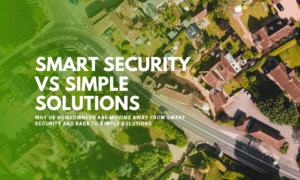Introduction
In today’s digital age, cloud computing has become an integral part of businesses, offering convenience, scalability, and cost-effectiveness. However, along with its benefits come significant security concerns. As more sensitive data moves to the cloud, ensuring its protection becomes paramount. Enter Cloud Armor – a comprehensive security solution designed to safeguard your cloud infrastructure from cyber threats. In this article, we’ll explore 10 essential tips to enhance your cloud security posture using Cloud Armor.
Understanding Cloud Armor
Before diving into the tips, let’s first understand what Cloud Armor is and how it works. Cloud Armor is a security offering from Google Cloud Platform (GCP) that provides Distributed Denial of Service (DDoS) protection and Web Application Firewall (WAF) capabilities. It allows you to defend your applications and services against cyber attacks by filtering and monitoring incoming traffic.
Implement Access Controls
One of the fundamental principles of cloud security is implementing stringent access controls. With Cloud Armor, you can define access policies based on IP addresses, geographical locations, or specific HTTP(S) headers. By restricting access to authorized users and networks, you can mitigate the risk of unauthorized access and potential data breaches.
Enable DDoS Protection
Distributed Denial of Service (DDoS) attacks can cripple your cloud infrastructure by overwhelming it with a flood of malicious traffic. Cloud Armor offers built-in DDoS protection that automatically detects and mitigates these attacks in real-time. By enabling DDoS protection, you can ensure the availability and reliability of your cloud-based applications and services.
Set Up Web Application Firewall (WAF) Rules
Web Application Firewall (WAF) plays a crucial role in protecting your web applications from common security threats such as SQL injection, cross-site scripting (XSS), and malicious bots. With Cloud Armor, you can create custom WAF rules to filter and block suspicious HTTP(S) traffic before it reaches your applications. Regularly update and fine-tune your WAF rules to adapt to evolving threats.
Monitor Traffic Patterns
Effective security requires continuous monitoring of your cloud environment for any anomalous behavior or suspicious activities. Cloud Armor offers robust logging and monitoring capabilities that allow you to track and analyze traffic patterns in real-time. By identifying and investigating potential security incidents promptly, you can prevent and mitigate security breaches effectively.
Implement Multi-Factor Authentication (MFA)
Multi-Factor Authentication (MFA) adds an extra layer of security by requiring users to provide multiple forms of verification before granting access to cloud resources. With Cloud Armor, you can enforce MFA for user authentication, reducing the risk of unauthorized access due to compromised credentials. Ensure that all users, including administrators and employees, enable MFA for their accounts.
Regularly Update and Patch Systems
Keeping your cloud infrastructure and applications up-to-date with the latest security patches is essential to address known vulnerabilities and weaknesses. Cloud Armor provides automated patch management capabilities that streamline the process of updating and patching your systems. Establish a regular schedule for patching and apply critical security updates promptly to minimize the risk of exploitation.
Encrypt Data in Transit and at Rest
Encryption is a fundamental aspect of data security, especially when it comes to protecting sensitive information in transit and at rest. Cloud Armor offers robust encryption mechanisms that encrypt data both in transit over the network and at rest in storage. Implement Transport Layer Security (TLS) for secure communication between clients and servers, and leverage encryption protocols such as AES for data storage encryption.
Conduct Regular Security Audits and Assessments
Regular security audits and assessments are essential to evaluate the effectiveness of your cloud security measures and identify any gaps or vulnerabilities. Cloud Armor provides comprehensive auditing and compliance monitoring tools that enable you to conduct thorough security assessments. Perform regular vulnerability scans, penetration tests, and compliance audits to ensure compliance with industry regulations and best practices.
Implement Least Privilege Principle
Adhering to the principle of least privilege is critical to minimizing the risk of unauthorized access and privilege escalation in your cloud environment. With Cloud Armor, you can enforce granular access controls and restrict user permissions to only the resources and actions necessary for their roles. By limiting access privileges to the bare minimum required to perform tasks, you can mitigate the impact of potential security breaches.
Stay Informed and Educated
Lastly, staying informed about the latest security threats, trends, and best practices is essential for maintaining a robust cloud security posture. Cloud Armor offers extensive documentation, training resources, and community forums to help you stay updated on emerging security challenges and solutions. Invest in employee training and awareness programs to ensure that your team is equipped with the knowledge and skills necessary to mitigate security risks effectively.
Conclusion
In conclusion, Cloud Armor provides a comprehensive suite of security features and capabilities to protect your cloud infrastructure from cyber threats. By implementing the tips outlined in this article, you can enhance your cloud security posture and safeguard your sensitive data effectively. Remember to stay vigilant, proactive, and informed about emerging security risks to stay one step ahead of potential attackers. With Cloud Armor, you can confidently embrace the benefits of cloud computing without compromising on security.



































